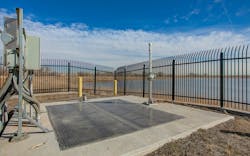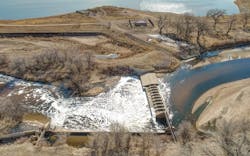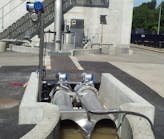With a surge in population and only about 15 inches of rainfall each year, the city of Brighton, Colorado faces a difficult challenge in water management for its more than 41,000 residents.
City officials designed an innovative solution with the construction of the Erger’s Pond Augmentation Station. The $5.4 million project, which was completed last year, included the construction of two raw water pump stations near a city-owned reservoir adjacent to the South Platte River. One pump is used to fill the reservoir, and the other is used to pump water back into the river.
The augmentation solution is a fairly new idea in Colorado, which has a vexing water issue. The state’s Western Slope, defined as being west of the Continental Divide, receives about 80 percent of the state’s water supply. But nearly 80 percent of the state’s population resides on the much drier eastern side of the divide. The South Platte River is the main water resource for the state’s eastern side, including Denver.
In 1969, the state established the Water Rights Determination and Administration act. It requires “junior” water users on over-appropriated streams (such as the South Platte) to replace water to offset depletions to “senior” users. The priority to water rights is based upon when water rights were acquired. Holders of senior rights have the first claim to withdraw water. Ownership of land is insufficient to convey a right to use water.
Brighton’s primary water supply comes from alluvial groundwater wells, which have junior rights, and therefore the city must augment supply so senior water users downstream have sufficient water. “Water in the West,” said Dawn Hessheimer, Water Resource Specialist for the City of Brighton, “is very different from water rights in the Eastern United States.”
For the project, Brighton replaced temporary pumps that were costly and inefficient with a permanent solution. Teams from Aslan Construction installed nine submersible pumps in underground wet wells to move the water, along with a gravity line.




